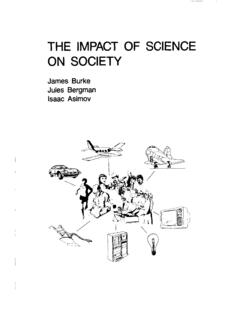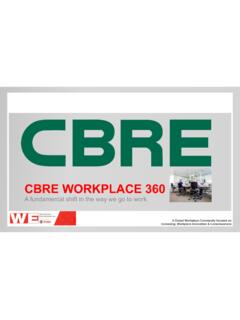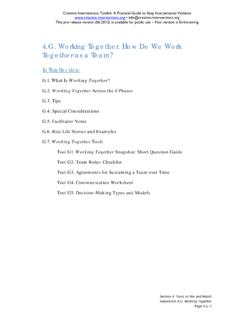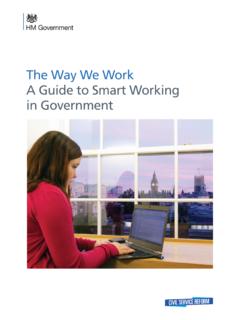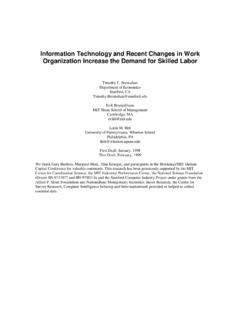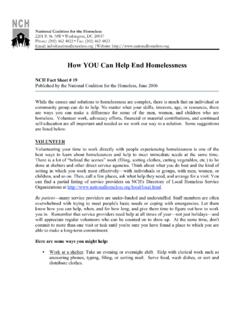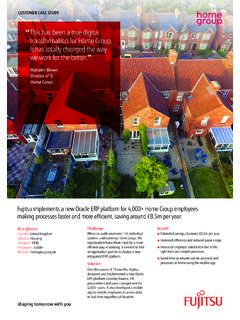Transcription of Improving the way we work - Food and Agriculture ...
1 Improving THE WAY WE WORKThis booklet describes some of the things that we have done over the past 18 months to transform FAO into an organization with a far greater capacity to end hunger and malnutrition than ever Strategic Thinking Process launched in January 2012 helped sharpen the focus of FAO s work and recognized the need for major changes in the way we do business. First, we needed to adopt a results-oriented approach whereby we identify what has to happen and then figure out how to get it done. Second, we needed to make sure that the impact of our work would be felt on the ground and that it would be backed by the global and national policies and practices required to make that impact sustainable.
2 Above all, we recognized that our activities must more clearly focus on results, on efficiency and on work in the field. Focus on efficiencyFocus on the fieldIn the past 18 months, Council approved the plan to decentralize operations which is already being implemented. This process has not only reduced central and administrative costs, but has also placed many more technical officers in the field. This ensures that FAO s country assistance policy is based on a deep and thorough understanding of the convergence between government priorities and FAO s comparative advantages. Field activi ties cover a wide range of initi atives, from controlling animal or plant diseases across countries or regions, to delivering training materials for farmer field schools, to renovating village grain storage facilities and to providing policy advice and has FAO done?
3 We have added nearly 50 professional posts to our regional and country offices, strengthening our capacity to respond to the specific needs identified by our partners. This decentralization was undertaken without any weakening of our global technical and normative work thanks to the efficiency savings identified. This puts FAO in the way to become a knowledge organization with its feet on the are renewing the political dialogue with member countries at the national level so that the cooperation with FAO helps achieve the food security and Agriculture goals set by Governments, reflected in the Country Programme Framework and aligned to the reviewed Strategic have introduced a new performance evaluation for FAO Representatives.
4 Which includes a new merit-based process for their appointment and testing of management have adjusted the reporting lines of FAO Representatives and included their participation in sub-regional and regional planning to help ensure the coherence of our programme of work at all the beginning of 2012, the Director-General has appointed more than 20 highly qualified FAO Representatives, drawing on a mix of internal and external candidates, with a view to Improving the rotation between Headquarters and the s vision for transformational change places a very high priority on efficiency and value for money. Accordingly, we have emphasized making the Organization more effective and responsive by administrative cost-cutting and efficiency gains.
5 These efficiency savings do not disrupt FAO's technical work and will be used to strengthen the Organization's direct assistance to has FAO done?In 2012-13, unprecedented USD 67 million in efficiency savings were achieved, mainly through reduction of administrative overhead at Headquarters. This includes USD million savings in addition to those mandated by critical review of posts led to the elimination of 88 positions mostly administrative at Headquarters. The Office of the Director-General reduced its costs by over 10 percent in 2012 as compared to the previous four-year Director-General has led by example on efficiency, including by using low-cost airlines for duty travel when this is possible.
6 This has contributed to a reduction of over 30 percent in his office s travel expenses compared to the previous four-year average, even though he still visited over 40 countries in his first year of eliminate hunger, food insecurity and malnutritionMake Agriculture , forestry and fisheries more productive and sustainableEnable inclusive and efficient agricultural and food systemsReduce rural povertyIncrease the resilience of livelihoods to disastersThe Strategic Thinking Process, which involved intense dialogue with member countries, country and regional consultations, and external experts, helped us to define five new Strategic Objectives and set out the interventions needed to meet the food and agricultural challenges faced by member countries: Help eliminate hunger, food insecurity and malnutrition; Make Agriculture more productive and sustainable; Reduce rural poverty; Enable inclusive and efficient agricultural and food systems; Increase the resilience of livelihoods from disasters.
7 A new FAO results framework will allow us to map the results and impacts of our plans, activities and programmes in pursuing these Strategic Objectives and a sixth objective on the provision of quality technical and normative work and has FAO done?We successfully concluded the FAO Reform Process and the implementation of the Immediate Plan of Action for FAO have prepared a Medium Term Plan (2014-17) and a Programme of work and Budget (2014-15) that captures our new strategic approach; ensures that our staff and financial resources are invested in areas and activities where we can deliver the greatest impact; and introduces a new mindset of working across traditional silos and geographical locations in a truly results-focused have launched six Regional Initiatives, two of them in Africa, within the global context of the new Strategic Objectives and funded them through efficiency savings identified since January 2012.
8 These initiatives address region-specific needs and priorities and will act inter alia as a pilot for the collaborative modus operandi between SO coordinators, ADGs and Regional Representatives. We have deployed the Global Resource Management System (GRMS) in all FAO offices. GRMS is an integrated and comprehensive corporate management system that provides greater accountability, streamlines administrative processes, reduces the time employees devote to paperwork and increases time available to spend on more strategic have developed new partnership strategies for civil society and the private sector, two stakeholder groups that will be critical to the achievement of our Strategic have started to integrate our emergency and development work .
9 When disaster hits, poor farmers are bound to lose some or all of their assets. FAO s priority is to help vulnerable families become more resilient to disasters, or even better, to equip them to anticipate crises and deal with them as they are strengthening food security governance by increasing support to the Committee on World Food Security (CFS), the cornerstone of international food security governance; increasing participation in the United Nations Secretary General s High Level Task Force on Global Food Security in which the FAO Director-General is Vice-chair and that is mobilizing the UN system to assist countries in meeting the Zero Hunger Challenge.
10 And hosting the Secretariat of the G-20 s Agricultural Market Information System (AMIS) which has contributed to greater transparency in food commodity taking up office, the Director-General renewed the senior management structure of the Organization and appointed over 30 senior managers to positions ranging from Director to Deputy Director-General levels. We have reduced recruitment timeframes for staff from an average of 9-12 months to 6 months and aim to bring it to a total of 3-4 that have been introduced or are being developed to reduce recruitment timeframes include: expanding the use of online iRecruitment for all vacancy announcements in the Organization; developing a corporate framework for the recruitment of international consultants and Subscribers to Personal Services Agreements (PSAs) that establishes transparent categories of consultants/PSAs from junior to senior level and transparent honoraria bands and enhanced performance evaluation.












